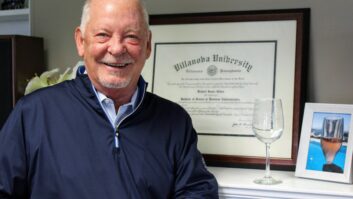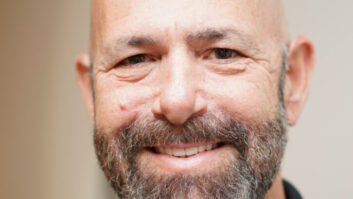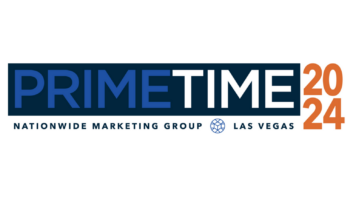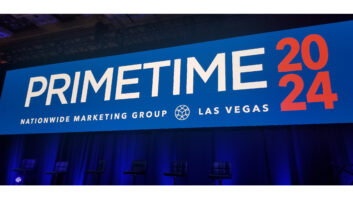Q. What does Cahners In-Stat Group see as the Pros, Cons and Meaning of the petition for the FCC to abandon 8-VSB?
Last week, the Sinclair Broadcast Group, along with 12 other TV station group owners, officially petitioned the Federal Communications Commission to abandon the ATSC 8-VSB modulation standard that previously had been chosen by the FCC as the transmission standard for US digital terrestrial broadcasts.
Gerry Kaufhold, Principal Analyst with Cahners In-Stat Group’s Converging Markets and Technologies Division, provides the following explanations. Cahners is the parent company of both TWICE and the In-Stat Group. This Q&A originally appeared onBitpipe, which presents analysis, white papers, case studies and test reports on information technology.
Q. Is it just Sinclair Broadcast Group involved in this petition?
No. It appears that a coalition of broadcast station owners is in agreement with Sinclair that 8-VSB doesn’t work. While this step had been expected, we were quite surprised to see 12 other Station Group Owners agree to sign on in support of Sinclair’s petition.
The co-petitioners own about 250 US TV stations. Interestingly, none of the co-petitioners owns a lot of local TV stations that are affiliated with the four major US networks, so they are not under the gun to have their local TV stations on-the-air with a digital terrestrial signal until sometime in 2002. Their participation in Sinclair’s petition might be motivated by the desire to delay their target date for converting to Digital TV. This would save them some money.
Paxson Communications is one of the co-petitioners, and they are now partially owned by NBC. Since NBC has been a big supporter of rolling out Digital TV, this presents an interesting conundrum.
Q. What actually is the controversy?
First, 8-VSB stands for Eight Level Vestigial Side Band modulation. This is the new digital broadcast standard invented by the Grand Alliance, and officially adopted by the Federal Communications Commission, or FCC. The current US analog TV standard uses a single level signal that also has a Vestigial Side Band.
Sinclair has recommended that US broadcasters be permitted to adopt the European COFDM standard, which is specified by the Digital Video Broadcast, or DVB-T, standards group. COFDM stands for Coded Orthogonal Frequency Division Multiplexing.
Sinclair engineers performed a public test and demonstration, using six locations in the Baltimore, Maryland, area. These tests used “rabbit ears” and “bow tie” antennas in local private residences. Four receivers were set up and used: two 8-VSB and two COFDM. The 8-VSB receivers never successfully locked onto the signal, while the COFDM receivers never lost the signal.
Sinclair used the Baltimore demonstrations to call media attention to what they perceive to be a major failing of the ATSC 8-VSB system. However, tests performed by Harris Corporation, along with other data available to the FCC, lead to the FCC publishing their October 1st report in favor of keeping 8-VSB.
Q. Is Sinclair really calling for the US to abandon 8-VSB?
Sinclair technically is not calling for total abandonment of 8-VSB. They are, instead, asking that the FCC permit broadcast station owners to choose the modulation method of their choice. However, in a dramatic and historical previous case – that of AM Stereo – there was no clear standard and nobody could figure out which of several methods to use, so the market died.
Cahners In-Stat Group believes that the same fate awaits a US digital TV standard that has no clear, single standard.
Q. Were the Sinclair demonstrations a fair experiment?
The tests performed by Sinclair used first generation 8-VSB tuners and demodulators, while the COFDM equipment was third generation. Sinclair engineers used “rabbit ears” and “bow tie” antennas, which, if you’ve ever used one, you already know that these types of antennas don’t pull in even today’s analog broadcasts very reliably.
While the tests were not completely scientific, their results certainly were quite dramatic – the 8-VSB receivers didn’t work nearly as well as the COFDM receivers did.
I don’t think Sinclair was trying to be impartial. They wanted to make a point, and make it in public, and they certainly succeeded at that.
Q. Can the semiconductor suppliers fix the problems with 8-VSB?
We’ve just completed a large report about the markets for 8-VSB tuners and demodulators. Our stance is that recent product announcement by Motorola, Philips, Sarnoff Labs, NxtWave and Oren Semiconductor point the way for next generation 8-VSB demodulators to substantially reduce the problems reported by the Sinclair tests.
A little company in Plano, Texas – Microtune – has just put a highly stable dual-conversion TV tuner on the market that greatly improves reception of 8-VSB broadcasts.
Finally, another small company – Godar Electronics – in Gilbert, Arizona, has developed a new “super” indoor antenna that has on-axis signal gain and off-axis signal attenuation properties that mimic what a larger outdoor antenna does. This antenna should solve much of the multipath problems that are endemic to non-directional “rabbit ears” and “bow ties.”
We believe that a combination of new indoor antennas, good tuners and next generation demodulators will make 8-VSB not only a solid technology, but also a fast growing market.
Q. Might the Sinclair petition delay the market for digital TV?
Yes, we believe that the Sinclair petition, if not quickly disposed of, will certainly delay several potential new markets.
Q. What kinds of products and markets are we talking about?
In the near term, say the next two years, we expect that Digital TV tuners for personal computers will become a fast growing segment. Geocast Network Systems has already signed deals with A H Belo and the Hearst-Argyle TV Station Groups to begin data broadcasting. Digital TV stations operated by these two Group Owners cover nearly 30% of US households. In our report, we tally up all the digital TV stations expected to be on-the-air by June of 2000, and these stations will cover more than 52 million households, which is nearly half the total US marketplace. This market will be ready to go very soon.
Hauppauge Computer Works is shipping 8-VSB Digital Tuners for personal computers already. GeoCast has announced that data broadcasts will soon be available from the Hearst-Argyle group of TV stations, and SkyTune will have new digital TV receivers with special added features coming for personal computers very soon.
Q. What does this portend for High Definition Television?
We’ve stated from the beginning that High Definition TV is going to be the high-end spectrum of TV sets for the next few years. However, by 2002, we will have a variety of new brands – such as Konka from China, and Vestel from Turkey, who will enter with lower-priced HDTV sets with smaller form factors.
HDTV sets will be used for much more than simply watching movies or sporting events on a big screen. There are already several tie-ins between current broadcast television programs and their associated web sites.
For example, during the baseball playoffs, and during the current football season, ABC television has been touting their “Enhanced TV.” You tune in the program on your TV set, and then you’re directed to sign your computer on to The Internet, and surf to a specific ABC web site and follow along with running commentary about the game, along with instantly tabulated player statistics.
A simple comment tells the tale: “Gee, if you do what ABC is telling you to do, it makes no sense. They’re asking you to watch two screens at the same time.” One screen is the big screen in your living room, which has the sporting event in full motion video with surround sound audio. The other screen is a high-resolution computer screen.
In three years, people with a wide aspect ratio High Definition TV set will be able to Zoom out the baseball game to 1/2 screen, and do the “interactive” thing on the right hand portion of their HDTV set.
Bingo! High Definition TV is needed for the broadcast networks to do both a program and e-commerce on one wide screen. Seen from this perspective, HDTV puts the national TV networks back in the catbird seat, and pulls millions of computer web surfers back into their living rooms where advertisers want them.
Q. What industries besides the TV industry will be affected?
The Consumer Electronics Manufacturing Association has, by far, the most at stake, because a failure of digital TV in the US means the failure of High Definition TV sets. But the Computer Industry, terrestrial broadcasters, television equipment suppliers and the semiconductor industry will all see important new markets be delayed if the Sinclair petition gains momentum.
Q. Will any of this affect Hollywood?
You bet it will!
Yet another huge industry depends on HDTV – Hollywood. The US Television and Movie Studio Industry absolutely needs HDTV if they are going to maintain their premier position for the creation and production of world class entertainment. Here’s why.
New production tools make it possible for nearly anyone to create “standard definition,” or SDTV, television programming. We’ve already seen streaming media exploding on The Internet with data rates of 250 kilobits/second. With ADSL, we’ll see near-broadcast-quality TV running at up to 2 megabits per second.
With high-speed Internet connections finally rolling out, SDTV can come from anywhere. However, the US ATSC standard for HDTV requires 19.39 megabits/second of continuous, uninterrupted bandwidth. And this figure leaves Cable Modems, ADSL connections and wireless Cable High-Speed Internet connection solutions in the dust for at least the next 10 years.
If Hollywood feels threatened by The Internet, their best hope is to jump on the HDTV bandwagon and produce programs that simply cannot be duplicated by in-home TV studios, nor delivered over The Internet by Cable Modems or ADSL connections.
Gerry Kaufhold
Principal Analyst Convergence Market Services
Cahners In-Stat Group
voice: 520 363-9752
e-mail: [email protected]
Report: ATSC Digital Tuners: 8-VSB Tunes In The World













